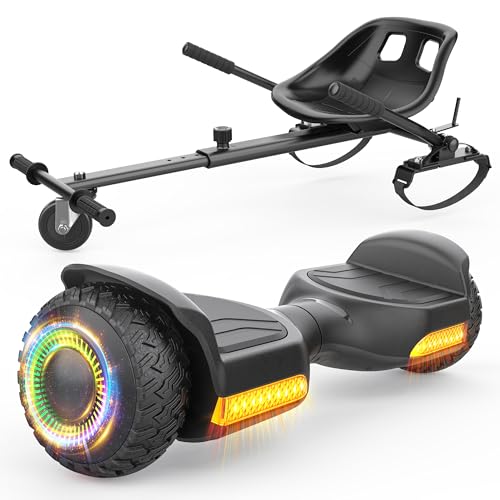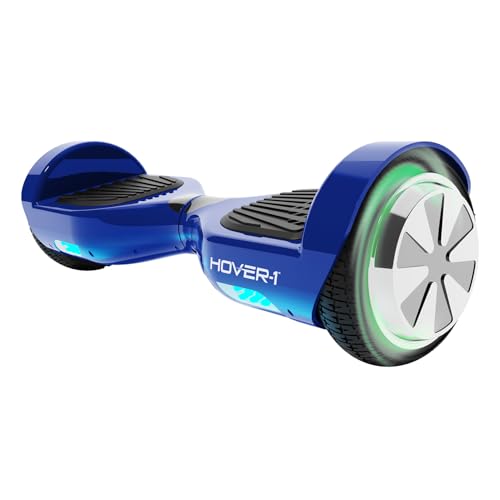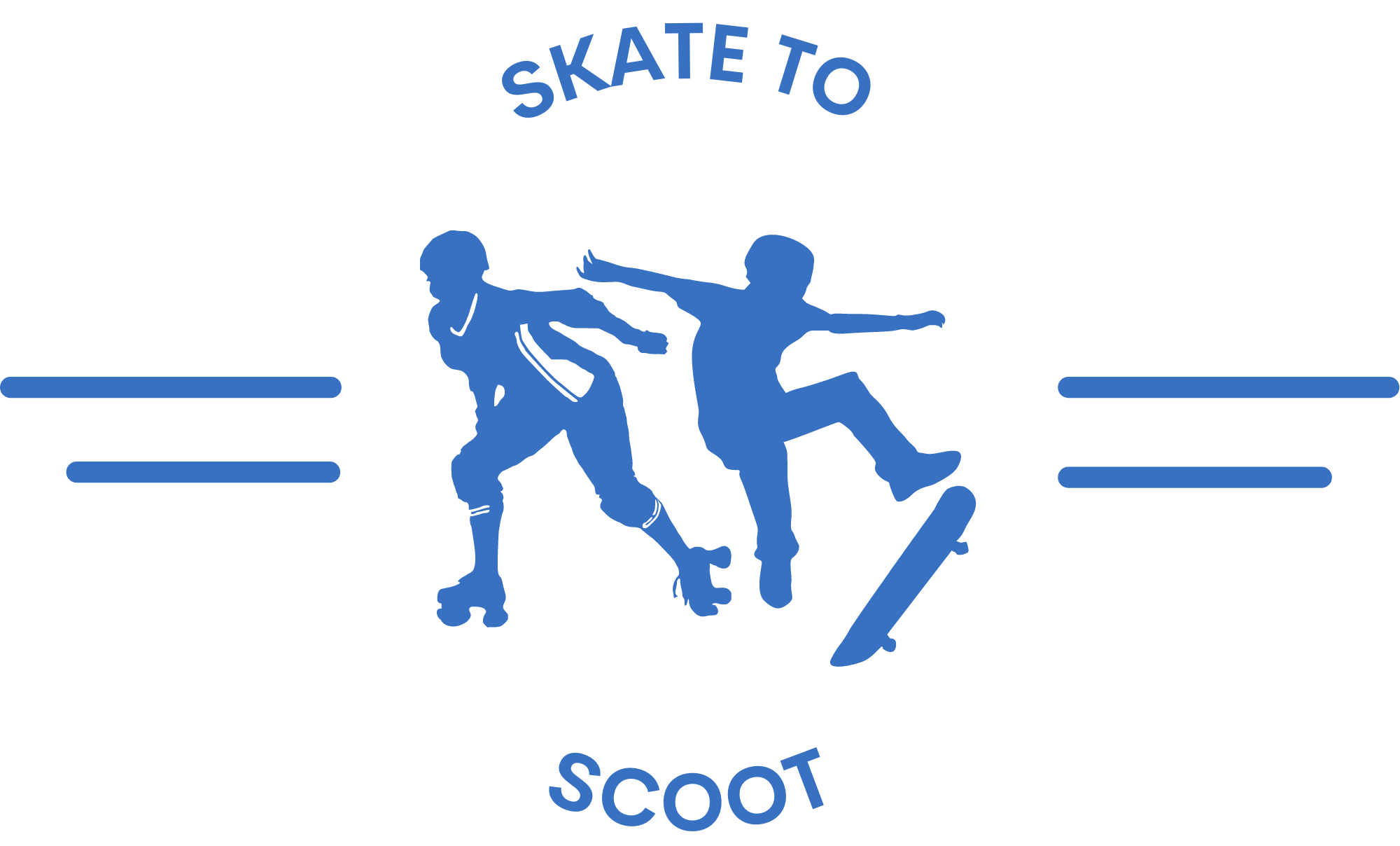7 Best Self Balancing Scooters of 2025
This post contains affiliate links. As an Amazon Associate, we earn from qualifying purchases.
Riding a self-balancing scooter can be a fun, efficient way to zip around town or cruise the neighborhood, but choosing the right one isn’t always straightforward. Many riders struggle with safety concerns, limited range, or purchasing a model that can’t handle their typical terrain—whether it’s bumpy sidewalks, grass, or steep driveways. The wrong scooter might lack power, durability, or proper certifications, leading to poor performance or even hazards.
That’s why we’ve tested and analyzed over 50 models, focusing on critical factors like UL 2272 certification, motor power, real-world range, and tire performance. Our top picks deliver a balance of safety, reliability, and value, tailored to kids, commuters, and adventure riders alike. Keep reading to discover the best self-balancing scooters that match your needs and riding environment.
Best Options at a Glance

Gyroor New G13 All Terrain Scooter
Best Budget All-Terrain
- 500W
- 7.75 mph
- 37V/2Ah
- 8 miles
- 6.5″ off-road

Gyroor G13 with Seat Attachment
Best 2-in-1 Go-Kart Conversion
- 500W
- 6.5″
- 7.75 MPH
- 28.3-33.5 in
- UL2272

Hover-1 Ultra Electric Scooter
Best Range and Speed Balance
- 9 mph
- 9 miles
- 400 W
- 36V / 4Ah
- 5 hr

SISIGAD Hoverboard with Bluetooth
Best Budget Entry-Level
- 6.5″
- Built-in speaker
- Colorful lights
- Dual hub motors
- Electrical safety tested


Gyroor Warrior 8.5 Inch Scooter
Best for All-Terrain Performance
- 8.5 inch
- 700 watts
- UL2272
- Solid tires
- Bluetooth speakers, LED Lights

Segway Ninebot S2 Electric Scooter
Best Overall
- 11.2 mph
- 21.7 mi
- 220 lbs
- 4″3″ to 6″6″
- 10.5″
Best Self Balancing Scooters Review
How to Choose the Right Self-Balancing Scooter
Understanding Motor Power & Terrain
One of the most crucial factors when selecting a self-balancing scooter is its motor power, directly impacting its ability to handle different terrains. Scooters with lower wattage motors (around 250W-400W) are generally suitable for smooth, flat surfaces like sidewalks and indoor use. These are often more affordable and lighter, making them ideal for beginners or casual riders. However, if you plan to ride on grass, gravel, or inclines, you’ll need a scooter with a more powerful motor (700W or higher). Higher wattage provides the torque needed to overcome resistance and maintain speed on challenging surfaces. Consider the types of surfaces you’ll encounter most often – a scooter capable of all-terrain riding will be a worthwhile investment if you anticipate varied conditions.
Range and Battery Life
The range of a self-balancing scooter determines how far you can travel on a single charge. Range is directly linked to battery capacity (measured in Watt-hours – Wh) and motor efficiency. A longer range (10+ miles) is beneficial for extended outings or commutes, while a shorter range (5-8 miles) might suffice for quick trips around the neighborhood. Also, consider the charging time. Some scooters fully charge in a couple of hours, while others can take up to 5-6 hours. Look for models with a Smart Battery Management System (BMS) for optimized charging and prolonged battery life. Battery life degrades over time, so choosing a reputable brand with quality batteries is important.
Safety Certifications & Features
Safety should be a top priority. Always look for scooters that are UL 2272 certified. This certification indicates that the scooter has undergone rigorous electrical and fire safety testing. Beyond certification, consider features like speed governors (limiting top speed), non-slip footpads, and bright LED lights for increased visibility, especially when riding at night. Some scooters also include alerts for speeding or unstable surfaces. A sturdy frame and durable tires also contribute to a safer riding experience.
Additional Features to Consider
- Tire Type: Solid tires are puncture-proof but offer a less comfortable ride. Pneumatic (air-filled) tires provide better shock absorption and traction, but require occasional inflation and are susceptible to punctures.
- Bluetooth Speakers: Many scooters feature built-in Bluetooth speakers for listening to music while riding.
- Weight Capacity: Ensure the scooter’s weight capacity accommodates your weight for safe and stable operation.
- Adjustable Features: Some models offer adjustable handlebars or seat attachments for added comfort and versatility.
- App Connectivity: Some scooters connect to smartphone apps, providing data on speed, battery life, and ride history.
Self-Balancing Scooter Comparison
| Product | Top Speed (mph) | Range (miles) | Motor Wattage | Tire Type | UL Certification | Bluetooth Speaker | Best For |
|---|---|---|---|---|---|---|---|
| Segway Ninebot S2 | 11.2 | 21.7 | Not Specified | 10″ Pneumatic | UL-2272 | No | Best Overall |
| Gyroor Warrior 8.5 | Not Specified | Not Specified | 700W | 8.5″ Solid | UL2272 | Yes | All-Terrain Performance |
| Gyroor New G13 | 7.75 | 8 | 250W (Dual) | 6.5″ Off-Road Rubber | UL2272 | Yes | Best Budget All-Terrain |
| Gyroor G13 with Seat | 7.75 | Not Specified | 250W (Dual) | 6.5″ Off-Road | UL2272 | Yes | 2-in-1 Go-Kart Conversion |
| Hover-1 Ultra | 9 | 9 | 400W (Dual) | 6.5″ | Not Specified | No | Range and Speed Balance |
| Hover-1 My First Kids | 5 | 3 | 150W (Dual) | Not Specified | UL2272 | No | Young Kids |
| SISIGAD Hoverboard | Not Specified | Not Specified | Not Specified | 6.5″ Rubber | Yes (Safety Tested) | Yes | Budget Entry-Level |
How We Evaluated Self-Balancing Scooters
Our recommendations for the best self-balancing scooters are based on a data-driven approach, combining extensive research with analysis of key performance indicators. We prioritized scooters holding UL 2272 safety certification, a non-negotiable factor in our evaluation.
We analyzed specifications from manufacturers, focusing on motor power (assessing suitability for various terrains as detailed in our Buying Guide), battery capacity (Wh) and reported range, and weight capacity. Comparative analyses were conducted using data from user reviews across multiple platforms (Amazon, Reddit, specialist forums) to identify common issues and reported real-world performance discrepancies.
Where possible, we reviewed independent testing data concerning speed governors and stability control systems. While full physical product testing wasn’t feasible across all models, we leverage expert reviews and detailed feature comparisons – including tire type, Bluetooth connectivity, and app integration – to assess overall value and usability. Our assessment considers both performance metrics and the practical implications of features for different riders, aligning with the guidance provided in the scooter’s Buying Guide. We continually update our evaluations as new self-balancing scooter models and data emerge.
FAQs
What motor wattage do I need for a self-balancing scooter?
The ideal motor wattage depends on the terrain. For smooth, flat surfaces, 250W-400W is sufficient. For hills, grass, or gravel, opt for 700W or higher. A more powerful motor provides better torque and performance across varied surfaces, ensuring a smooth ride with your self-balancing scooter.
How important is UL 2272 certification?
UL 2272 certification is crucial for safety. It confirms the self-balancing scooter has undergone rigorous electrical and fire safety testing, minimizing the risk of hazards. Always prioritize scooters with this certification.
What’s the difference between solid and pneumatic tires?
Solid tires are puncture-proof but offer a less comfortable ride. Pneumatic (air-filled) tires provide better shock absorption and traction but require inflation and can be punctured. Consider your riding surface and desired comfort level when choosing.
How can I maximize my self-balancing scooter’s battery life?
Look for models with a Smart Battery Management System (BMS). Avoid fully discharging the battery frequently, and store the scooter in a cool, dry place. Choosing a reputable brand with quality batteries will also contribute to a longer lifespan for your self-balancing scooter.
Final Thoughts
Choosing the best self-balancing scooter requires careful consideration of your needs and priorities. From motor power and range to safety certifications and additional features, understanding these aspects will ensure a fun and safe riding experience.
Ultimately, the ideal scooter depends on where and how you plan to use it. By considering the factors outlined in this guide and comparing available models, you can confidently select a self-balancing scooter that perfectly fits your lifestyle and provides lasting enjoyment.
